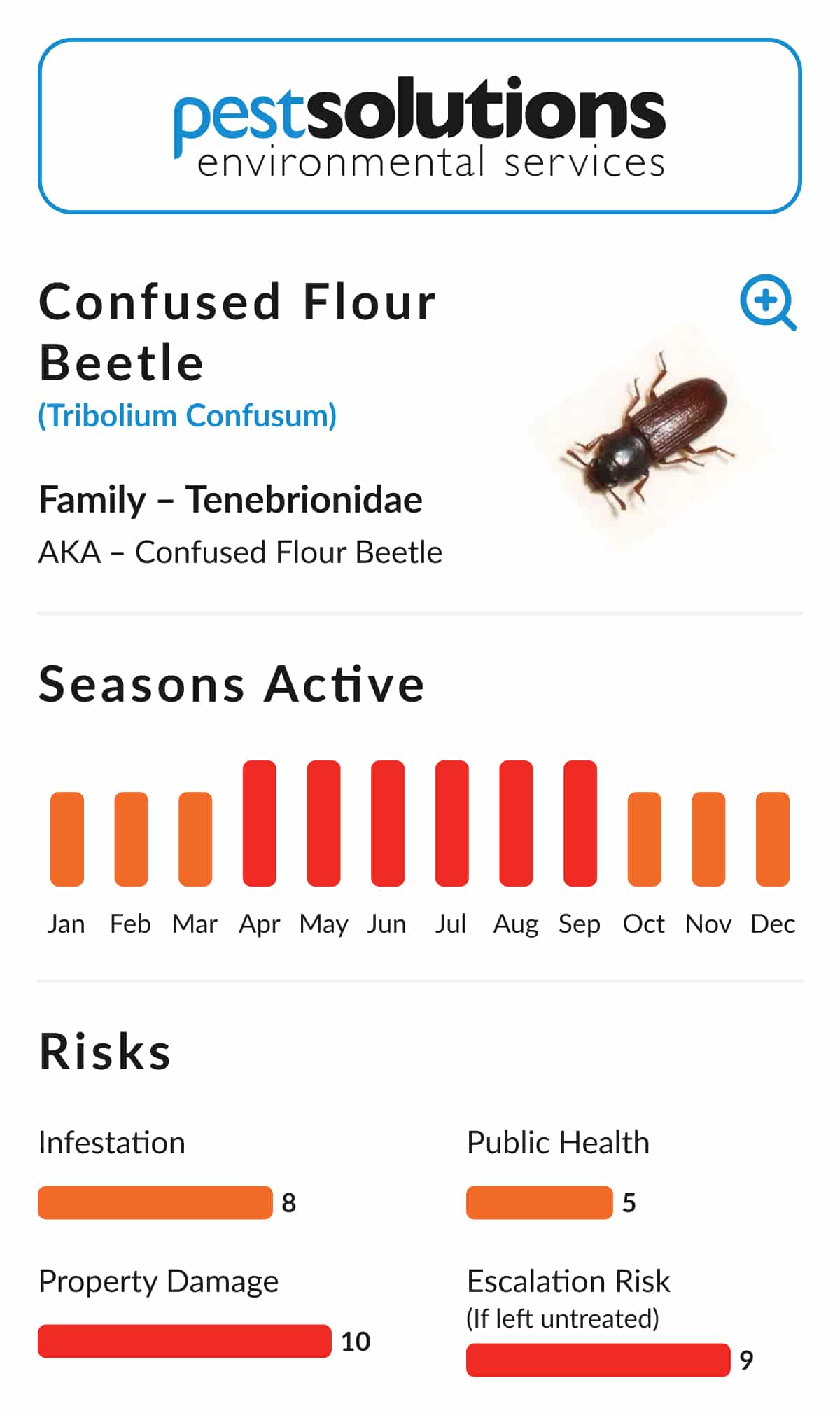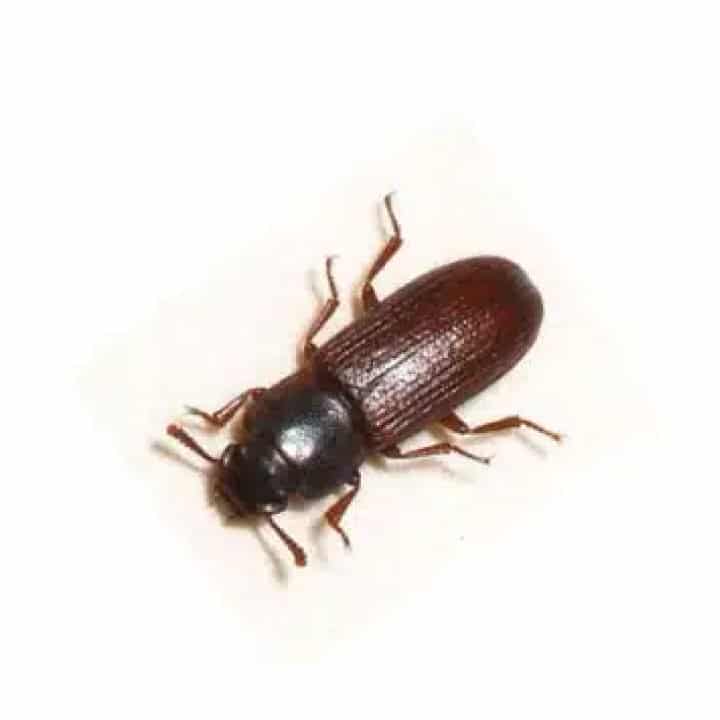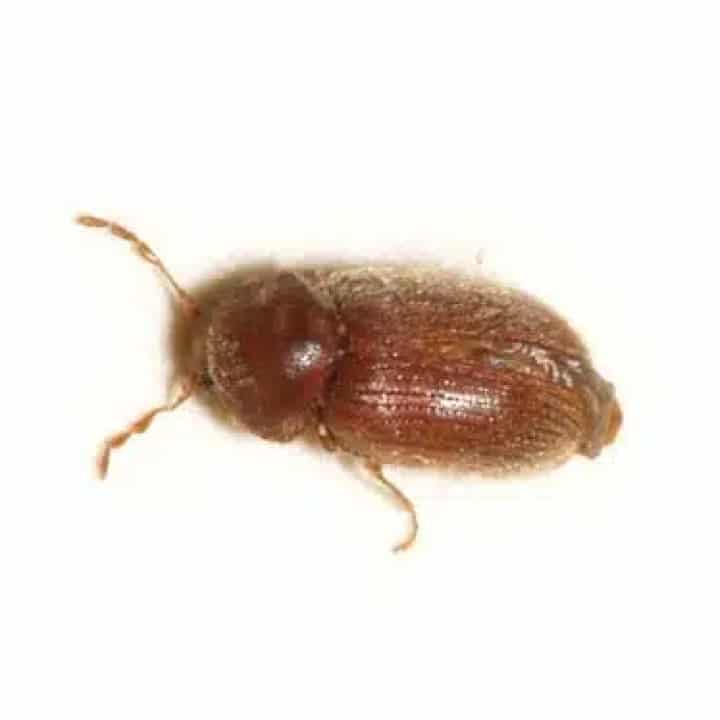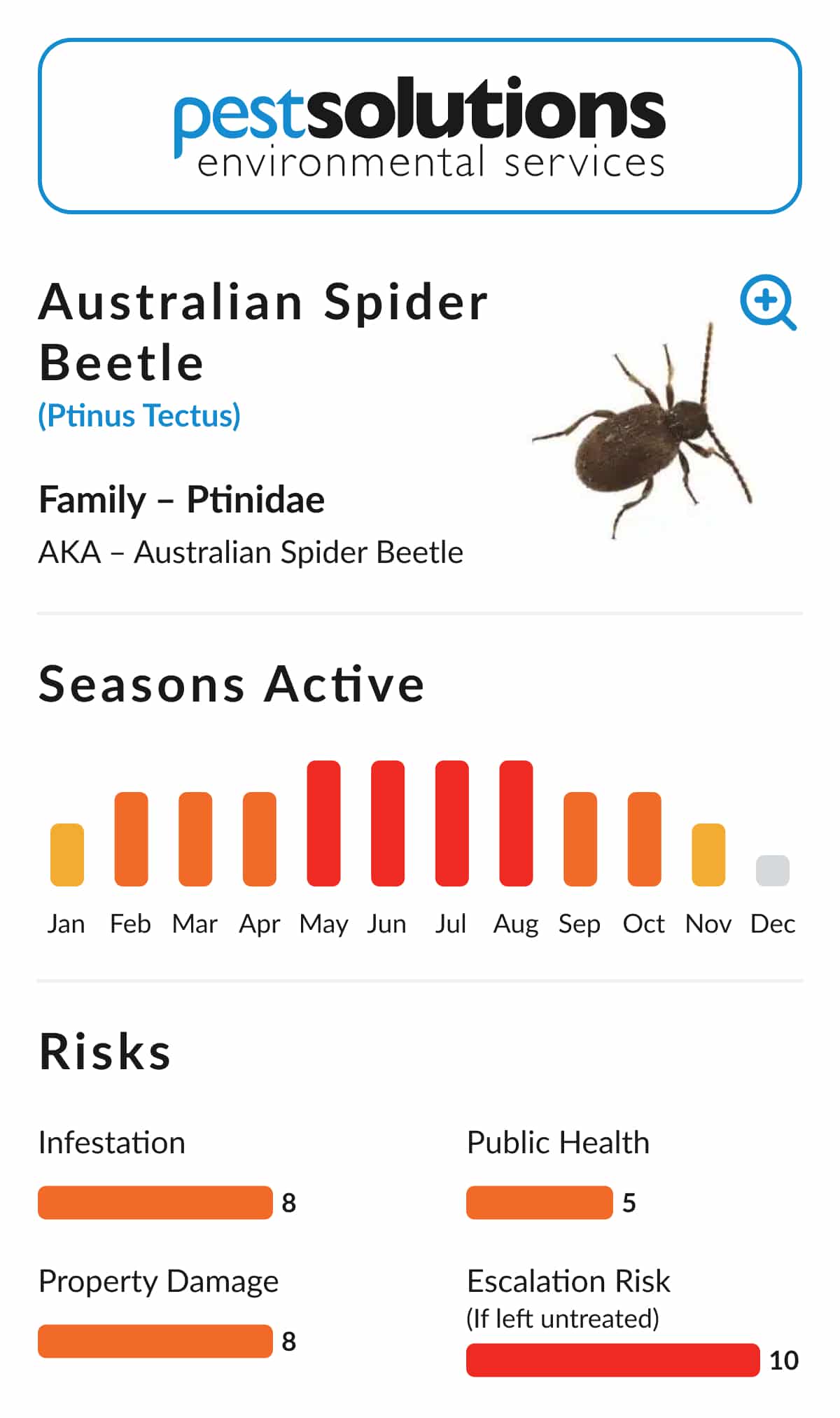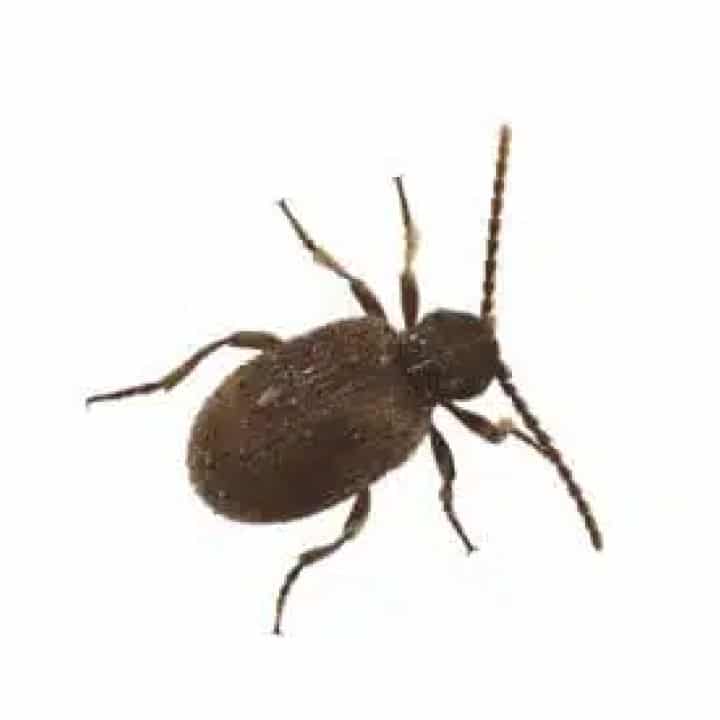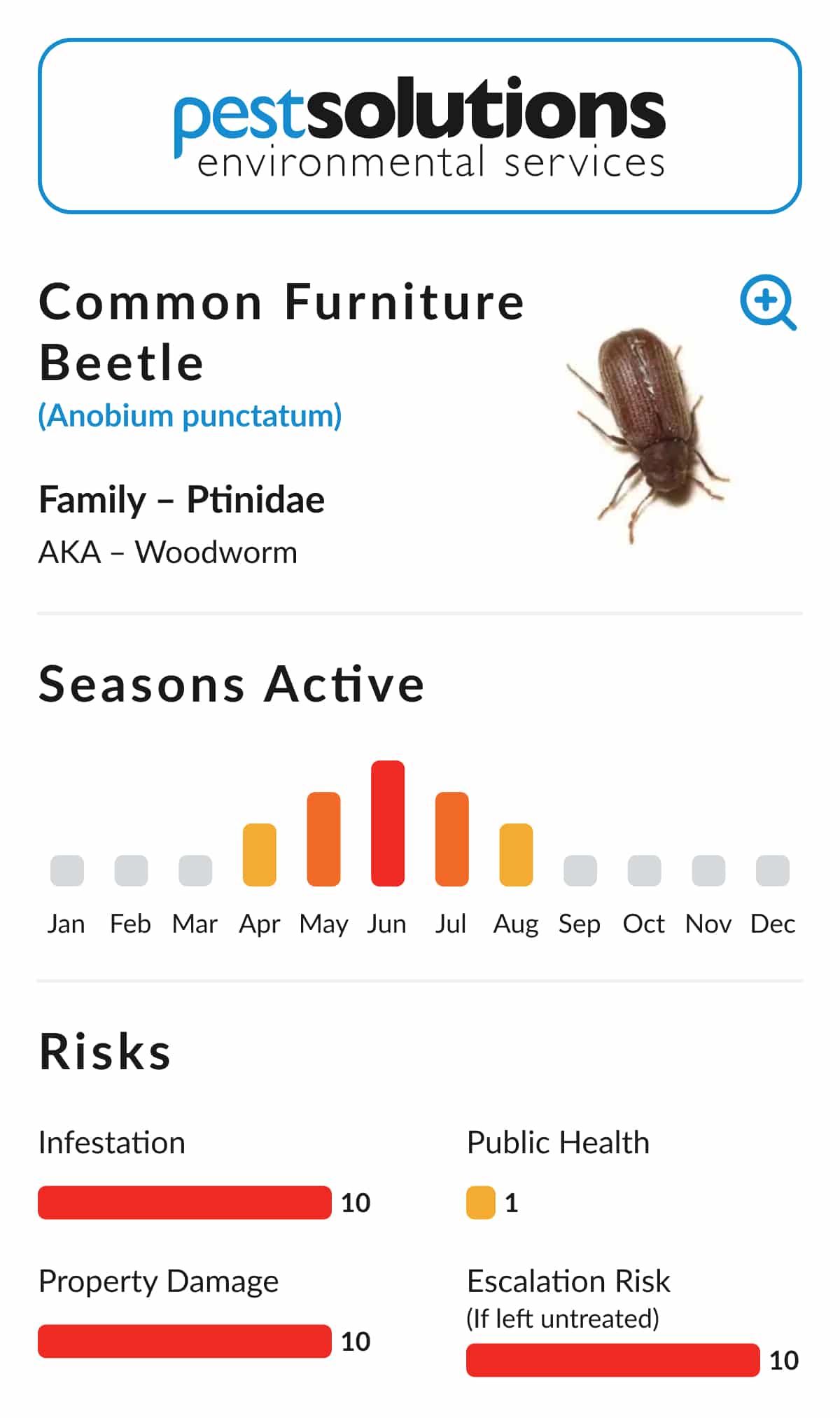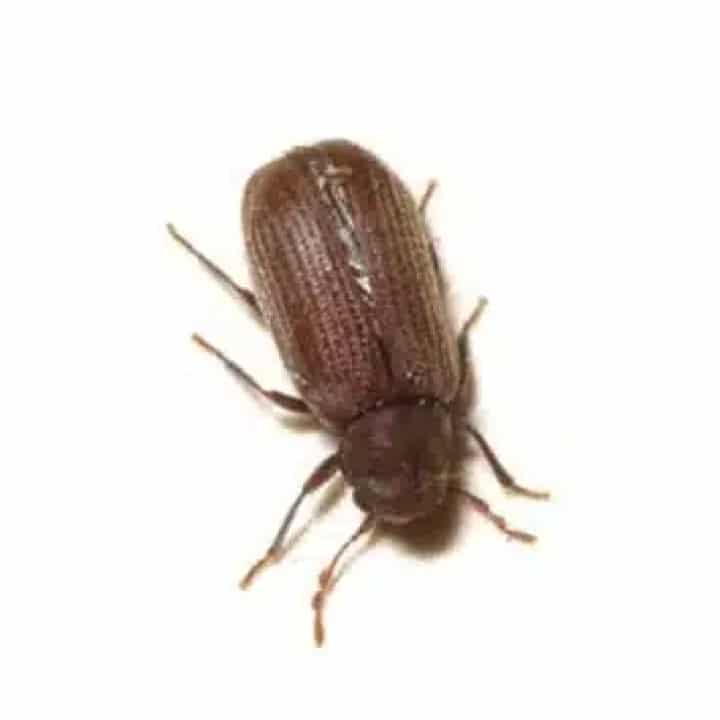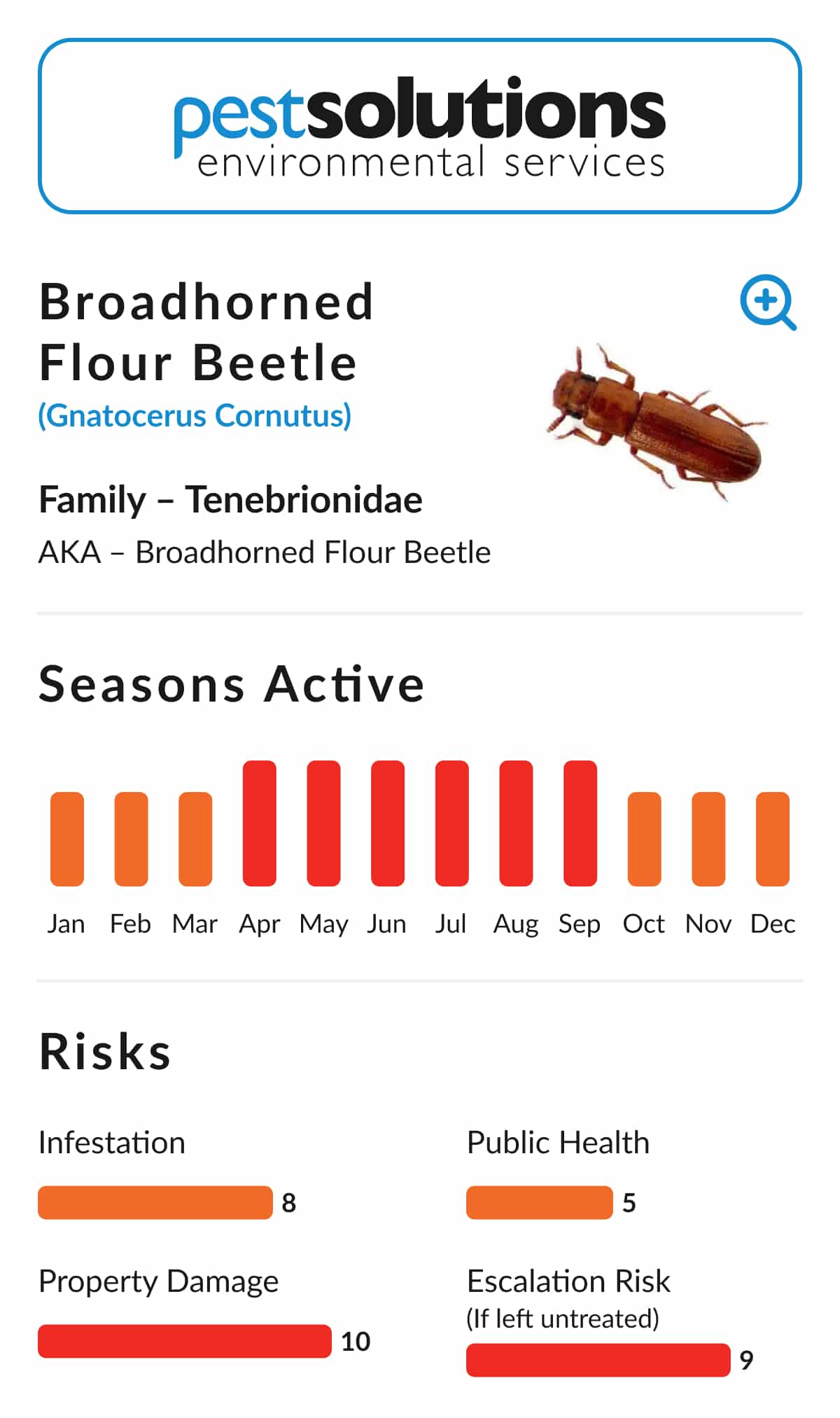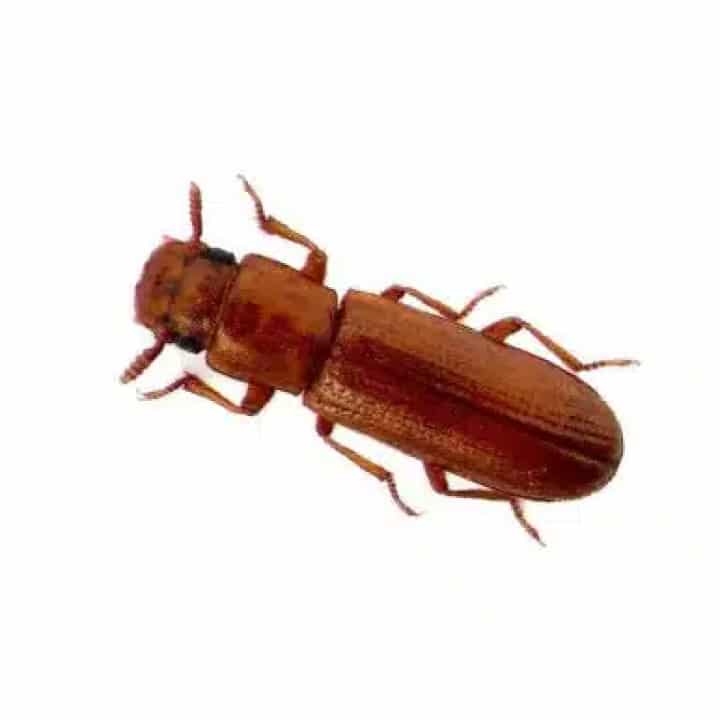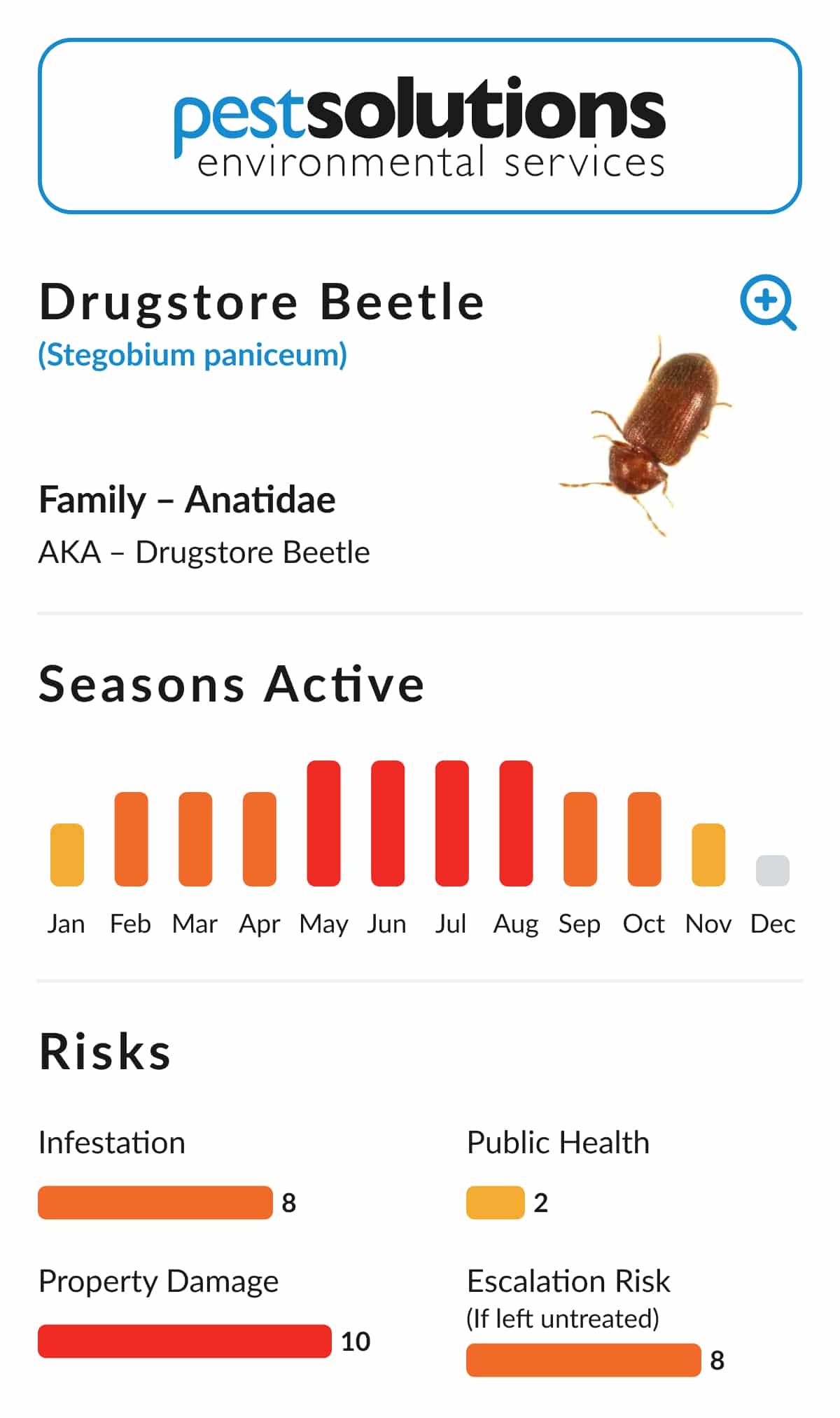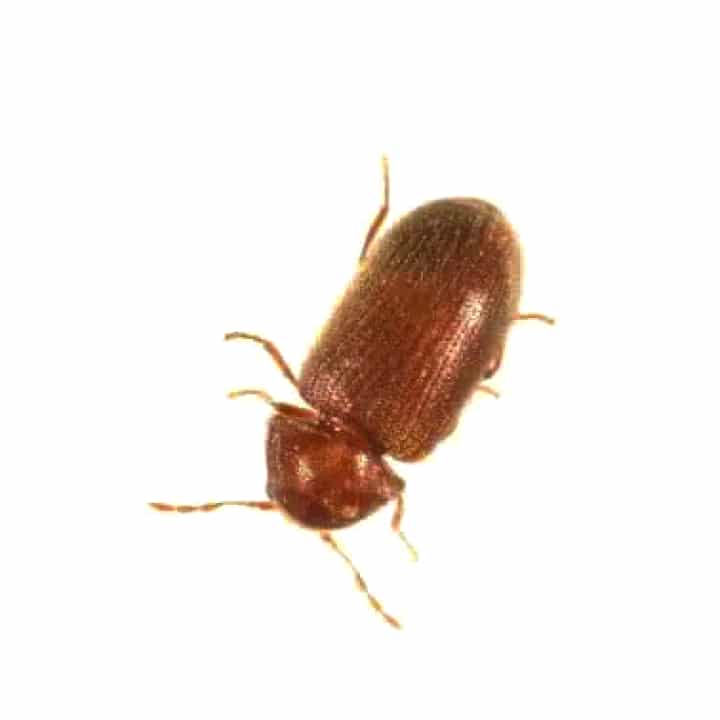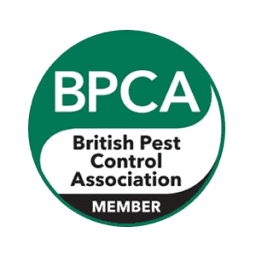All About the Confused Flour Beetle
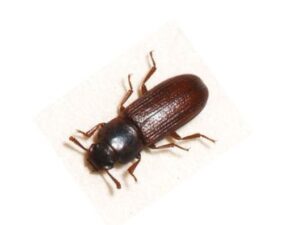
The larvae are almost identical in appearance to those of the Rust-Red Flour Beetle. They are pale, segmented, and worm-like in shape. Under warm conditions, the beetle’s life cycle can be completed in as little as five weeks. In cooler environments, development slows down and may take up to 18 weeks. Adult beetles can live for up to 18 months.
Habitat and Distribution
The Confused Flour Beetle is widespread across the UK and commonly encountered in food manufacturing, packaging, and storage facilities. It prefers environments with dry, starchy materials such as flour, cereals, and grains. Thanks to its cold hardiness and ability to survive in extremely dry conditions, it is able to establish itself in areas where other beetle species may struggle.
Typical habitats include flour and feed mills, commercial kitchens, warehouses, and even domestic kitchen cupboards. Once an infestation takes hold, it can be difficult to eliminate without professional intervention.
Why They’re a Problem
Confused Flour Beetles infest processed food materials rather than whole grains. They are commonly found in flour, cereals, animal feeds, dried fruits, nuts, and similar products. While they don’t cause direct structural damage, their presence leads to contamination of food goods.
One of the key issues with this beetle is its ability to taint infested products. Both adults and larvae release chemicals known as quinones, which create a foul smell and unpleasant taste in affected food. This renders both raw ingredients and finished products unsuitable for sale or consumption. Infestations can result in significant product losses and serious implications for food safety and business reputation.
Although they often coexist with Rust-Red Flour Beetles, the two species do not interbreed. The Confused Flour Beetle is usually the more dominant species in UK flour and animal feed mills.
Control and Prevention
Effective control of the Confused Flour Beetle relies on thorough hygiene and preventative measures, alongside appropriate treatment strategies when required. The methods used are broadly similar to those for the Rust-Red Flour Beetle, but with the added advantage that the Confused Flour Beetle is not currently known to show significant resistance to insecticides.
Key control measures include:
-
Regular deep cleaning of machinery, storage bins, and production areas to remove food dust and residues
-
Strict stock rotation to minimise the storage of old or unused product
-
Monitoring using pheromone traps or routine visual inspections
-
Cooling storage areas where possible to slow the beetle’s development
-
Application of targeted insecticide treatments as part of a wider integrated pest management (IPM) approach
As with all stored product pests, early detection is essential. Once established, infestations can be hard to contain without professional assistance.
